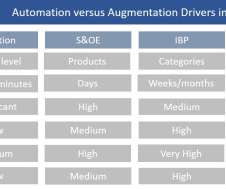Technology Support in Integrated Business Planning: Automation, Augmentation and Human Centricity
Supply Chain Trend
AUGUST 13, 2020
IBP can support a company’s vision by positively influencing its values and behaviors, thus actively shaping the company’s culture (Van Hove, 2017). In my benchmark survey (Van Hove, 2017), only 25% of survey participants answered yes to the question ‘ We have a relentless focus on only what is important for long term business objectives ’.

















Let's personalize your content